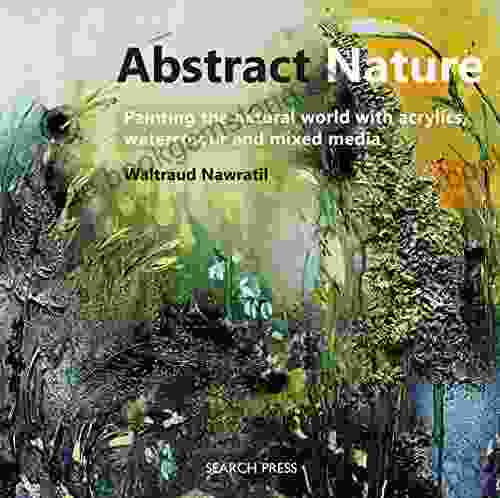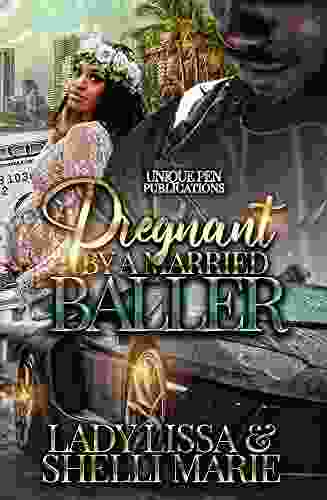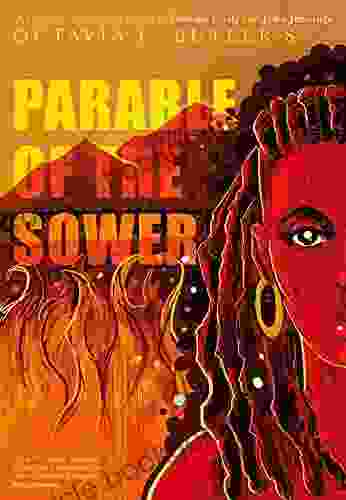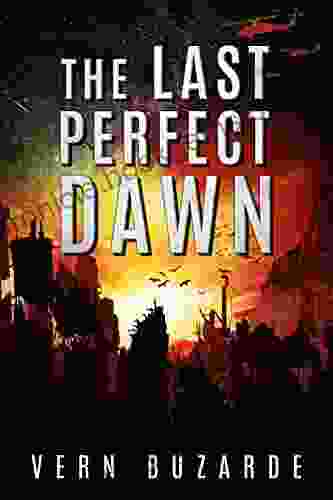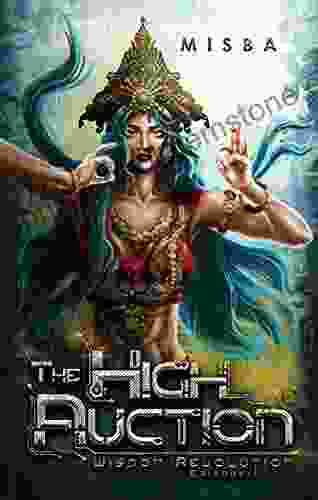Painting the Natural World with Acrylics, Watercolours, and Mixed Media: A Comprehensive Guide

The natural world is a never-ending source of inspiration for artists of all kinds. From the delicate petals of a flower to the towering majesty of a mountain range, the beauty of nature can be captured and expressed through the medium of paint.
In this comprehensive guide, we will explore the various techniques and materials used to paint the natural world with acrylics, watercolours, and mixed media. We will cover everything from choosing the right colours to creating realistic textures and capturing the essence of a scene.
4.5 out of 5
| Language | : | English |
| File size | : | 243640 KB |
| Screen Reader | : | Supported |
| Print length | : | 112 pages |
Choosing the Right Colours
One of the most important aspects of painting the natural world is choosing the right colours. The colours you use will determine the overall mood and atmosphere of your painting, so it is important to take your time and select your colours carefully.
When choosing colours, it is helpful to consider the following factors:
- The time of day: The time of day will have a significant impact on the colours you use. For example, a sunrise or sunset will be much warmer in colour than a midday scene.
- The weather: The weather will also affect the colours you use. For example, a stormy sky will be much darker and more dramatic than a clear sky.
- The season: The season will also affect the colours you use. For example, a spring scene will be much brighter and more colourful than a winter scene.
- Your own personal style: Ultimately, the colours you use will be a matter of personal preference. However, it is important to consider the factors listed above when making your choices.
Creating Realistic Textures
Once you have chosen your colours, you need to start thinking about how you are going to create realistic textures. The texture of your painting will help to bring your subject to life and make it more believable.
There are a number of different techniques that you can use to create realistic textures. One common technique is to use a dry brush. A dry brush is a brush that has been dipped in paint and then wiped on a paper towel to remove most of the paint. This will leave just a small amount of paint on the brush, which can be used to create a dry, textured effect.
Another technique for creating texture is to use a sponge. A sponge can be used to dab paint onto your canvas, creating a rough, uneven surface. This technique can be used to create the texture of rocks, trees, or other natural objects.
Finally, you can also use your fingers to create texture. Your fingers can be used to smudge paint, create lines, or add small details to your painting. This technique can be used to create the texture of leaves, flowers, or other delicate objects.
Capturing the Essence of a Scene
In addition to choosing the right colours and creating realistic textures, it is also important to capture the essence of a scene when painting the natural world. This means taking into account the overall mood and atmosphere of the scene, as well as the details that make it unique.
To capture the essence of a scene, you need to pay attention to the following factors:
- The composition: The composition of your painting will play a big role in determining the overall mood and atmosphere. For example, a painting with a strong central focus will be more dramatic than a painting with a more diffuse focus.
- The lighting: The lighting in your painting will also affect the overall mood and atmosphere. For example, a painting with strong, directional lighting will be more dramatic than a painting with soft, diffused lighting.
- The details: The details in your painting will help to bring the scene to life and make it more believable. For example, adding small details such as birds, trees, or flowers can help to create a more realistic and immersive experience for the viewer.
- Your own personal interpretation: Ultimately, the essence of a scene is something that you will need to interpret for yourself. There is no right or wrong answer, so trust your instincts and paint what you feel.
Painting the natural world is a challenging but rewarding experience. By following the tips and techniques outlined in this guide, you can create beautiful and realistic paintings that capture the beauty and wonder of the natural world.
So what are you waiting for? Get out there and start painting!
4.5 out of 5
| Language | : | English |
| File size | : | 243640 KB |
| Screen Reader | : | Supported |
| Print length | : | 112 pages |
Do you want to contribute by writing guest posts on this blog?
Please contact us and send us a resume of previous articles that you have written.
 Best Book
Best Book Page Flip
Page Flip Bookshelf
Bookshelf Literary loom
Literary loom Chapter
Chapter Bookish
Bookish PageTurner
PageTurner Bibliophile
Bibliophile Story
Story Inkwell
Inkwell Bookworm
Bookworm Labyrinth
Labyrinth Plot Twist
Plot Twist Prose
Prose Paperback
Paperback Storyteller
Storyteller Sanctuary
Sanctuary Fiction
Fiction Reading
Reading Chronicle
Chronicle Read
Read Ivy Laika
Ivy Laika Ashley Kahn
Ashley Kahn Julius B Fleming Jr
Julius B Fleming Jr Elizabeth George
Elizabeth George Cynthia D Bittinger
Cynthia D Bittinger Adam Selzer
Adam Selzer Laura Lam
Laura Lam Wilbur Smith
Wilbur Smith Laure Paillex
Laure Paillex Angela Y Davis
Angela Y Davis Alan K Rode
Alan K Rode Timothy F Geithner
Timothy F Geithner Adolph L Reed
Adolph L Reed Cavan Scott
Cavan Scott Nancy Skolos
Nancy Skolos Max Porter
Max Porter Maurizio Onnis
Maurizio Onnis Julian E Zelizer
Julian E Zelizer Alexander Van Millingen
Alexander Van Millingen Carol Hayes
Carol Hayes Jacqueline Woodson
Jacqueline Woodson Hieronymus Bosch
Hieronymus Bosch Nicole Mones
Nicole Mones Sudhir Hazareesingh
Sudhir Hazareesingh Albert Alhadeff
Albert Alhadeff Gregory Mattix
Gregory Mattix Tim Mulliner
Tim Mulliner Helen Mccarthy
Helen Mccarthy Joe Cartwright
Joe Cartwright John Biggar
John Biggar Isabella Decarlo
Isabella Decarlo Olivia Laing
Olivia Laing Mike Myers
Mike Myers Tiana Laveen
Tiana Laveen Dana R Jones
Dana R Jones Adriana Licio
Adriana Licio Linda Hartley
Linda Hartley Tw Neal
Tw Neal Dominik Imseng
Dominik Imseng Theo Coster
Theo Coster Irene Eizen
Irene Eizen Jan Caeyers
Jan Caeyers Manuel Lima
Manuel Lima Jami Attenberg
Jami Attenberg Rick Thompson
Rick Thompson Ediciones Puentesdeluz
Ediciones Puentesdeluz Roxane Gay
Roxane Gay Tom Von Logue Newth
Tom Von Logue Newth Craig Martelle
Craig Martelle Edgar Bergen
Edgar Bergen Wooden Leg
Wooden Leg The Total Travel Guide Company
The Total Travel Guide Company Michael Massen
Michael Massen Ben Pester
Ben Pester Adam Mayers
Adam Mayers Edward K Kaplan
Edward K Kaplan Naomi Finley
Naomi Finley John Banville
John Banville Jessica Dunham
Jessica Dunham Peter Tonguette
Peter Tonguette Vern Buzarde
Vern Buzarde Kathleen Rooney
Kathleen Rooney John Scherber
John Scherber J A Taylor
J A Taylor Lee Mylne
Lee Mylne Rob Sinclair
Rob Sinclair Diana Cooper
Diana Cooper Dennis Vanderkerken
Dennis Vanderkerken Abby Stein
Abby Stein Dennis Ross
Dennis Ross Ada Hoffmann
Ada Hoffmann Anja Grebe
Anja Grebe Suzanne Ostersmith
Suzanne Ostersmith Richard Wright
Richard Wright Tacarra
Tacarra Kim Michele Richardson
Kim Michele Richardson David Annandale
David Annandale Tim Mackintosh Smith
Tim Mackintosh Smith John Bester
John Bester Christopher G Nuttall
Christopher G Nuttall Stephen Quiller
Stephen Quiller Talek Nantes
Talek Nantes Jean Daive
Jean Daive John Annerino
John Annerino Brian Yansky
Brian Yansky Vivian Jeanette Kaplan
Vivian Jeanette Kaplan Alexander Simpson
Alexander Simpson Peter Lasalle
Peter Lasalle Douglas Mccall
Douglas Mccall Traci Bautista
Traci Bautista Lina Chang
Lina Chang David M Buerge
David M Buerge Chris Patten
Chris Patten Ashley C Ford
Ashley C Ford M Jacobs
M Jacobs Richard Schickel
Richard Schickel Adina Hoffman
Adina Hoffman Keisha J
Keisha J Natasha Knight
Natasha Knight Ruth Fidler
Ruth Fidler Makoto Fujimura
Makoto Fujimura Nicolas Forgue
Nicolas Forgue James G Speight
James G Speight Aaron Sanchez
Aaron Sanchez Douglas R Hall
Douglas R Hall Henry Cejudo
Henry Cejudo Debbie Millman
Debbie Millman Drew Harrison
Drew Harrison Rochelle Spencer
Rochelle Spencer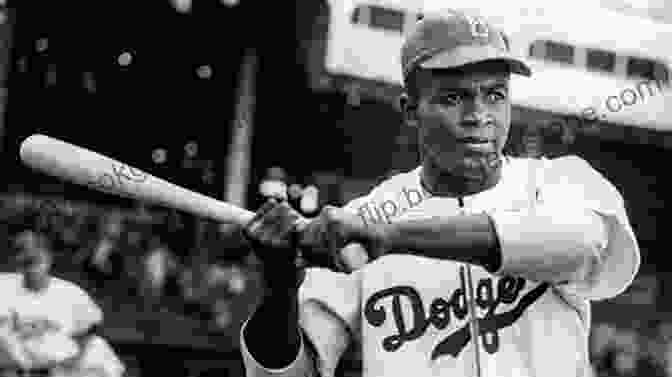 Jackie Robinson
Jackie Robinson Gordon Theisen
Gordon Theisen Abigail Thomas
Abigail Thomas Julia C Tobey
Julia C Tobey Susannah Shaw
Susannah Shaw Graham Hutchins
Graham Hutchins Diana Vreeland
Diana Vreeland Peter Schwenger
Peter Schwenger Tessa Dare
Tessa Dare Stacey Weaver
Stacey Weaver John Leighton
John Leighton Charles Solomon
Charles Solomon Mary Hollingsworth
Mary Hollingsworth David Mitchell
David Mitchell Chelsea Handler
Chelsea Handler Ilana Benady
Ilana Benady Amir Tsarfati
Amir Tsarfati Frank M Rines
Frank M Rines Maureen Klovers
Maureen Klovers Emily Design
Emily Design Connie Pombo
Connie Pombo Kal Spriggs
Kal Spriggs Sarah Mccartney
Sarah Mccartney Ross King
Ross King Stephen Greenblatt
Stephen Greenblatt Gilad Segev
Gilad Segev Actus
Actus Michael H Hodges
Michael H Hodges Richard Schweid
Richard Schweid Colin Odell
Colin Odell Rob Zombie
Rob Zombie Morgan Richard Olivier
Morgan Richard Olivier John Mierau
John Mierau Irvin D Yalom
Irvin D Yalom Lejuan James
Lejuan James Tiffany Dufu
Tiffany Dufu Malcolm Guite
Malcolm Guite Lisa Scottoline
Lisa Scottoline Karen Osborne
Karen Osborne Candi B
Candi B Emery C F Bryant
Emery C F Bryant Andre Norton
Andre Norton Bill Sherk
Bill Sherk Abdulrazak Gurnah
Abdulrazak Gurnah Josh Levine
Josh Levine David Larocca
David Larocca Michael Dimercurio
Michael Dimercurio Pixie Unger
Pixie Unger T A Williams
T A Williams Deesha Philyaw
Deesha Philyaw Wahida Clark
Wahida Clark Marco Polo
Marco Polo Adam Skolnick
Adam Skolnick Victoria Aveline
Victoria Aveline Lisa Jones
Lisa Jones James Webb
James Webb Allison Levy
Allison Levy Julia Alvarez
Julia Alvarez Rohan M Vider
Rohan M Vider Scott Sigler
Scott Sigler A Hauser
A Hauser Josh Law
Josh Law Jeffrey Kluger
Jeffrey Kluger Alexandra Billings
Alexandra Billings Erika Mailman
Erika Mailman Miriam Wenger Landis
Miriam Wenger Landis Michael Atavar
Michael Atavar H Terrell Griffin
H Terrell Griffin Anne Green Gilbert
Anne Green Gilbert Julie Hoverson
Julie Hoverson Vanessa Hua
Vanessa Hua Thomas Wallace Knox
Thomas Wallace Knox Helen Keller
Helen Keller Peter T Deutermann
Peter T Deutermann Maurice Delafosse
Maurice Delafosse Samuel Best
Samuel Best Stephen Mack Jones
Stephen Mack Jones Helen Fremont
Helen Fremont Jeff Brown
Jeff Brown Sam Gennawey
Sam Gennawey Rachel Aukes
Rachel Aukes Maturin Murray Ballou
Maturin Murray Ballou Evan Currie
Evan Currie Patrick Bade
Patrick Bade Zain Deane
Zain Deane Rachel Shirley
Rachel Shirley Keith Whiting
Keith Whiting Alec Waugh
Alec Waugh Jintana Rattanakhemakorn
Jintana Rattanakhemakorn Matthew O Brien
Matthew O Brien Nat Segaloff
Nat Segaloff Tanya Angelova
Tanya Angelova Karen Rose Smith
Karen Rose Smith Jack L Grossman
Jack L Grossman Beverly Grondin
Beverly Grondin Stephen Laskevitch
Stephen Laskevitch Eric Scigliano
Eric Scigliano Robert J Serling
Robert J Serling Hiram Garcia
Hiram Garcia Laurence Parent
Laurence Parent Lucille Ball
Lucille Ball K Nicole
K Nicole Adam Troy Castro
Adam Troy Castro Lynn Austin
Lynn Austin Kristine Kathryn Rusch
Kristine Kathryn Rusch Rodney Barker
Rodney Barker Jolyn Parker
Jolyn Parker Jed Perl
Jed Perl Elly Thuy Nguyen
Elly Thuy Nguyen Robert H Ruby
Robert H Ruby Jeremy Zenith
Jeremy Zenith Soraya Altorki
Soraya Altorki Sue Hiepler
Sue Hiepler Eric Little
Eric Little Giovanni Battista Piranesi
Giovanni Battista Piranesi Carlos L De La Rosa
Carlos L De La Rosa Shane Shepherd
Shane Shepherd Yvonne Navarro
Yvonne Navarro Yvonne Tasker
Yvonne Tasker Annette Marie
Annette Marie Mary S Lovell
Mary S Lovell Andrea Linett
Andrea Linett Dale Armstrong
Dale Armstrong Hope Jahren
Hope Jahren Sandra Shpilberg
Sandra Shpilberg Wolf Moon
Wolf Moon Dr Steven Gardner
Dr Steven Gardner Adriana Trigiani
Adriana Trigiani Roy Lang
Roy Lang Polina Traore Dana Kaledin
Polina Traore Dana Kaledin Cheryl Briggs
Cheryl Briggs Ilarion Merculieff
Ilarion Merculieff Rufus Mcgaugh
Rufus Mcgaugh Melissa Gilbert
Melissa Gilbert Bob Miglani
Bob Miglani Lisa Leonard
Lisa Leonard R B Herkes
R B Herkes Christopher Hinz
Christopher Hinz Ace Atkins
Ace Atkins Ruy Castro
Ruy Castro Jan Hawkins
Jan Hawkins Shelli Marie
Shelli Marie April Vollmer
April Vollmer David Bergsland
David Bergsland Stephanie Peterson Jones
Stephanie Peterson Jones Hirokazu Miyazaki
Hirokazu Miyazaki Gabriel Levin
Gabriel Levin Max Boot
Max Boot David Feltmate
David Feltmate Catherine V Holmes
Catherine V Holmes Wilma Roos
Wilma Roos Benjamin Kerstein
Benjamin Kerstein Patrick Leigh Fermor
Patrick Leigh Fermor Abe Streep
Abe Streep Jessi Dunnagan
Jessi Dunnagan Clare Walker Leslie
Clare Walker Leslie Adam Frankel
Adam Frankel Adrian Shaughnessy
Adrian Shaughnessy Beatriz Williams
Beatriz Williams Eric Van Lustbader
Eric Van Lustbader Dean Heath
Dean Heath Abbe Rolnick
Abbe Rolnick Lara Shannon
Lara Shannon Elizabeth Leane
Elizabeth Leane Randa Jarrar
Randa Jarrar Julia Cameron
Julia Cameron Inman Learning
Inman Learning Carolyn Schlam
Carolyn Schlam Anne Gillain
Anne Gillain Angela Dejong
Angela Dejong David Marusek
David Marusek Debby Burnett Safranski
Debby Burnett Safranski Patrice Balark
Patrice Balark Dynamo
Dynamo Brin Jonathan Butler
Brin Jonathan Butler Fx Holden
Fx Holden Kenneth Kee
Kenneth Kee Sandra Staple
Sandra Staple Adam Phillips
Adam Phillips Lawrence Winkler
Lawrence Winkler Alvin Eng
Alvin Eng Etienne De Backer
Etienne De Backer Zan
Zan Stevie Salas
Stevie Salas Tom Gose
Tom Gose Amarie Avant
Amarie Avant Nick Cook
Nick Cook Dean Wesley Smith
Dean Wesley Smith Anand Prahlad
Anand Prahlad Abby Hoy
Abby Hoy Ted Orland
Ted Orland Le Roy H Appleton
Le Roy H Appleton Eileen Cronin
Eileen Cronin Deyan Sudjic
Deyan Sudjic Adrian Matejka
Adrian Matejka Amber Share
Amber Share Jennifer S Alderson
Jennifer S Alderson Hashim Akib
Hashim Akib Chuck Wendig
Chuck Wendig Brian L Evans
Brian L Evans Sean Oswald
Sean Oswald Marian Leah Knapp
Marian Leah Knapp Esther Henry
Esther Henry Jim Korkis
Jim Korkis Enjeela Ahmadi Miller
Enjeela Ahmadi Miller John Sandford
John Sandford Adrian Tchaikovsky
Adrian Tchaikovsky Sue Kim
Sue Kim Marissa Cox
Marissa Cox Katherine A S Sibley
Katherine A S Sibley Jeremy Bai
Jeremy Bai Abdul El Sayed
Abdul El Sayed Dick Cluster
Dick Cluster M H Johnson
M H Johnson Alice Childress
Alice Childress Rita Goldberg
Rita Goldberg Ian Nathan
Ian Nathan Chris Legaspi
Chris Legaspi Carla Rahn Phillips
Carla Rahn Phillips Abby Denson
Abby Denson Tom Brierton
Tom Brierton Anne Marie O Connor
Anne Marie O Connor Mark Amerika
Mark Amerika Jim Butcher
Jim Butcher Darien Gee
Darien Gee Toya Banks
Toya Banks Cheng Yan
Cheng Yan Seabury Quinn
Seabury Quinn Rob Zabrecky
Rob Zabrecky Kendra Sumter
Kendra Sumter Ernst Haeckel
Ernst Haeckel Halle Mcqueen
Halle Mcqueen April Baker Bell
April Baker Bell Adam Nayman
Adam Nayman James D Prescott
James D Prescott Abhirup Bhattacharya
Abhirup Bhattacharya Maggie Price
Maggie Price Roz Goldfarb
Roz Goldfarb Wendy Holden
Wendy Holden Danie Ware
Danie Ware David Bayles
David Bayles Asia Monique
Asia Monique Mercedes Lackey
Mercedes Lackey Virginia Lia
Virginia Lia S K Hardy
S K Hardy Roman Plesky
Roman Plesky Pedro Mendes
Pedro Mendes Rod Kluzki
Rod Kluzki Michael Langlois
Michael Langlois Ferial Youakim
Ferial Youakim Paul Clayton
Paul Clayton Nghi Vo
Nghi Vo John Kenneth Muir
John Kenneth Muir Sam Wasson
Sam Wasson Elizabeth Rusch
Elizabeth Rusch Chandra Blumberg
Chandra Blumberg Ira Sukrungruang
Ira Sukrungruang Fiona Stocker
Fiona Stocker Jared Clemons
Jared Clemons Plewaynar
Plewaynar Keith Van Sickle
Keith Van Sickle Hans Holbein
Hans Holbein Adam Gamble
Adam Gamble Sadaf Farooqi
Sadaf Farooqi Bill O Neill
Bill O Neill Philip Mould
Philip Mould Barbara Laine
Barbara Laine Mary Norris
Mary Norris Tao Wong
Tao Wong William Joseph Hill
William Joseph Hill Michelle Houts
Michelle Houts Giorgio Vasari
Giorgio Vasari T A Mclaughlin
T A Mclaughlin Penny Brown
Penny Brown Chencia C Higgins
Chencia C Higgins Pamela Craft
Pamela Craft L Andrew Cooper
L Andrew Cooper Ivan So
Ivan So John Schreiner
John Schreiner Ben Bova
Ben Bova Alice Dews
Alice Dews Ellen Ward Lopez
Ellen Ward Lopez Chan Park
Chan Park Kerry Colburn
Kerry Colburn Francis Parkman
Francis Parkman Deborah Levy
Deborah Levy Rebecca Frankel
Rebecca Frankel Jennifer Lilya
Jennifer Lilya Adam Gidwitz
Adam Gidwitz Amanda Milo
Amanda Milo Sheila Heti
Sheila Heti Julie Gilbert Pollard
Julie Gilbert Pollard Giovanni Antonio Canal
Giovanni Antonio Canal Rob Goss
Rob Goss Italo Svevo
Italo Svevo Liesbet Collaert
Liesbet Collaert Ed Andreychuk
Ed Andreychuk Todd Wassel
Todd Wassel Malaka Gharib
Malaka Gharib Torey L Hayden
Torey L Hayden Craig A Falconer
Craig A Falconer Franklyn Sills
Franklyn Sills Mallory Monroe
Mallory Monroe Karen Reed
Karen Reed Abby Lee Miller
Abby Lee Miller Margery M Heffron
Margery M Heffron Theodore Sturgeon
Theodore Sturgeon Sam Zell
Sam Zell Christopher Densmore
Christopher Densmore Robert Beverly Hale
Robert Beverly Hale Dan Tranberg
Dan Tranberg Aaron Linsdau
Aaron Linsdau C S Friedman
C S Friedman Adam Abraham
Adam Abraham Tara Conklin
Tara Conklin Carmine Rossi
Carmine Rossi James Omoghosa Abu
James Omoghosa Abu Lynda Williams
Lynda Williams Thomas Sparr
Thomas Sparr Carolyn Burke
Carolyn Burke Susan J Cobb
Susan J Cobb Viajo Logo Existo
Viajo Logo Existo Bernd Schubert
Bernd Schubert Illustrated Edition Kindle Edition
Illustrated Edition Kindle Edition Errol Fuller
Errol Fuller Abbie Hoffman
Abbie Hoffman Books Club
Books Club James Rosone
James Rosone Chantal V Johnson
Chantal V Johnson Addison Jane
Addison Jane Tamara Marie
Tamara Marie Denese A Rodgers
Denese A Rodgers Olita Design
Olita Design Nicola Griffith
Nicola Griffith Christina Sharpe
Christina Sharpe John Jennings
John Jennings Jorge J E Gracia
Jorge J E Gracia Alyson Sheldrake
Alyson Sheldrake Kelle Hampton
Kelle Hampton Onethree L
Onethree L Lamar Neal
Lamar Neal Jed Alger
Jed Alger William Blackwell
William Blackwell Agathe Trapp
Agathe Trapp Yochanan Fein
Yochanan Fein Wolfgang Daunicht
Wolfgang Daunicht Sally Field
Sally Field Adrian Nicole Leblanc
Adrian Nicole Leblanc Rusty Ferguson
Rusty Ferguson Gabe Baltazar
Gabe Baltazar Amy C Balfour
Amy C Balfour George Stietz
George Stietz Kristen Stein
Kristen Stein Valeria Vegas
Valeria Vegas Gloria Naylor
Gloria Naylor Helen Zia
Helen Zia Charles Darwin
Charles Darwin Eerie Von
Eerie Von E J Koh
E J Koh Walter E Little
Walter E Little Jay Narayan
Jay Narayan Michael Showalter
Michael Showalter H P Lovecraft
H P Lovecraft Kennedy King
Kennedy King Mary Jane Hall
Mary Jane Hall Jackie Faasisila
Jackie Faasisila Neil Macfarquhar
Neil Macfarquhar Friedrich Glauser
Friedrich Glauser David Farmer
David Farmer Charles River Editors
Charles River Editors Ilise Benun
Ilise Benun Stuart Smith
Stuart Smith Davar Ardalan
Davar Ardalan Connie Ann Valenti
Connie Ann Valenti David Kidd
David Kidd Thami Prusent
Thami Prusent Brian Jay Jones
Brian Jay Jones Tom Delonge
Tom Delonge Andrew Farago
Andrew Farago Sheila Williams
Sheila Williams Susan Gaber
Susan Gaber Adam Rogers
Adam Rogers Kassandra Lamb
Kassandra Lamb Jenny Smith
Jenny Smith Adam Begley
Adam Begley Eve Brown Waite
Eve Brown Waite Jessica Mellow
Jessica Mellow Paolo Hewitt
Paolo Hewitt Fritz Lang
Fritz Lang Frederick Levy
Frederick Levy Peter Kazaks
Peter Kazaks Gabrielle Reece
Gabrielle Reece Adolf Hungry Wolf
Adolf Hungry Wolf Brian Lockman
Brian Lockman Eloise Moran
Eloise Moran Danica Winters
Danica Winters Ray Bradbury
Ray Bradbury Peter C Smith
Peter C Smith Zara Thorne
Zara Thorne Terry Schott
Terry Schott Kathleen Grissom
Kathleen Grissom Jade Snow Wong
Jade Snow Wong Pam Grier
Pam Grier Aaron Lansky
Aaron Lansky Melissa Maker
Melissa Maker Caius A Mauricette
Caius A Mauricette Ricardo S Sanchez
Ricardo S Sanchez Michael Newberry
Michael Newberry Misba
Misba Kirsten Mckenzie
Kirsten Mckenzie Fritz Leiber
Fritz Leiber Nancy French
Nancy French Arthur Schopenhauer
Arthur Schopenhauer Aarti Namdev Shahani
Aarti Namdev Shahani Adam Tetlow
Adam Tetlow Peter Dendle
Peter Dendle Michael Reardon
Michael Reardon Bill Barich
Bill Barich David Robbins
David Robbins Charles Scott
Charles Scott Adam Fortunate Eagle
Adam Fortunate Eagle Joanna Goss
Joanna Goss Lilly Dancyger
Lilly Dancyger Jamie Wesley
Jamie Wesley Garth Stein
Garth Stein Vova Bo
Vova Bo David Brendel
David Brendel John Richardson
John Richardson Timothy P Spira
Timothy P Spira Peter Jenkins
Peter Jenkins Michael Harkins
Michael Harkins Adam Fletcher
Adam Fletcher Peter Genovese
Peter Genovese Stephen Flanagan
Stephen Flanagan Dani Cavallaro
Dani Cavallaro William Friedkin
William Friedkin Angela May
Angela May Jenny Pentland
Jenny Pentland Robin Gaby Fisher
Robin Gaby Fisher Robin Roberts
Robin Roberts Kindle Interactive Edition
Kindle Interactive Edition Nato Thompson
Nato Thompson Tony Hefner
Tony Hefner Loretta Krupinski
Loretta Krupinski Barry Hatton
Barry Hatton Engineer Greg
Engineer Greg Jonathan Mooney
Jonathan Mooney Robert C Cumbow
Robert C Cumbow
Light bulbAdvertise smarter! Our strategic ad space ensures maximum exposure. Reserve your spot today!

 Earl WilliamsThe Big Smoke Penguin Poets: A Primer on London's Thriving Underground Poetry...
Earl WilliamsThe Big Smoke Penguin Poets: A Primer on London's Thriving Underground Poetry... Hugh ReedFollow ·17.6k
Hugh ReedFollow ·17.6k Julian PowellFollow ·19.6k
Julian PowellFollow ·19.6k Eddie PowellFollow ·15.1k
Eddie PowellFollow ·15.1k Roger TurnerFollow ·5.1k
Roger TurnerFollow ·5.1k Yasunari KawabataFollow ·9k
Yasunari KawabataFollow ·9k Ivan TurnerFollow ·5.1k
Ivan TurnerFollow ·5.1k Everett BellFollow ·15.1k
Everett BellFollow ·15.1k Roland HayesFollow ·11.7k
Roland HayesFollow ·11.7k
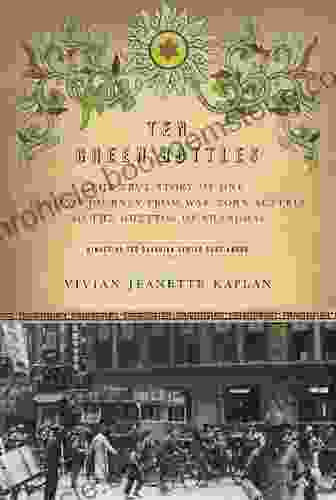
 Allen Ginsberg
Allen GinsbergThe True Story of One Family's Journey from War-Torn...
In the heart of Europe,...
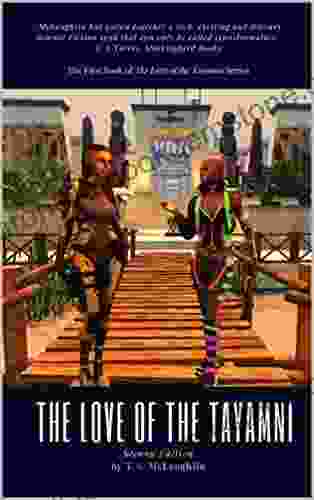
 Noah Blair
Noah BlairThe Enduring Love of The Tayamni Second Edition: A...
The Tayamni...
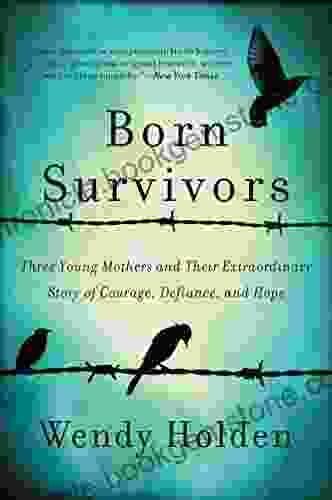
 Frank Mitchell
Frank MitchellThree Young Mothers And Their Extraordinary Story Of...
In the face of adversity,...

 Angelo Ward
Angelo WardReality Check: The Empire Corps Unmasked
In the labyrinthine realm of global...
4.5 out of 5
| Language | : | English |
| File size | : | 243640 KB |
| Screen Reader | : | Supported |
| Print length | : | 112 pages |


